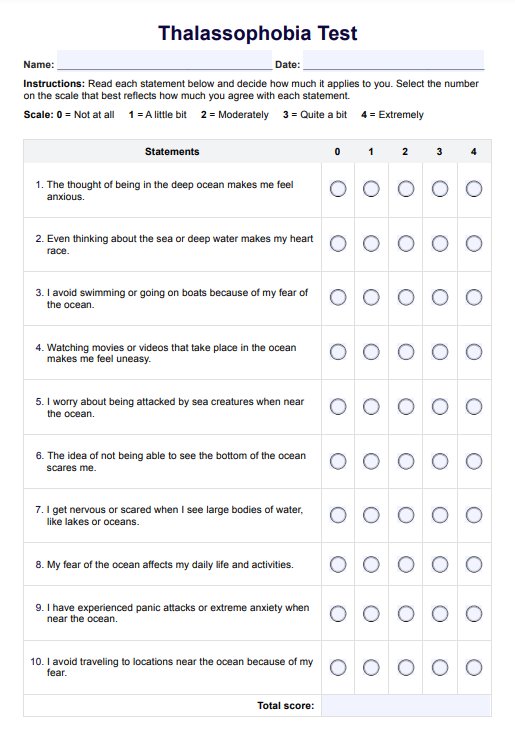Deep water, such as the deep ocean, evokes fear due to its vast, unknown nature, which can trigger anxiety about unseen dangers like sea creatures or drowning. The lack of visibility, depth, and unpredictability of the environment increases discomfort, making it intimidating for many individuals.

Thalassophobia Test
Learn what thalassophobia is. Use our free Thalassophobia Test PDF to help assess your patient's symptoms.
Thalassophobia Test Template
Commonly asked questions
Triggers for thalassophobia include exposure to the deep sea or other deep bodies of water, such as lakes or oceans. Media portrayals of sea monsters, traumatic experiences involving water, or hearing stories about accidents at sea can also induce or worsen the fear.
Thalassophobia is often rooted in an intense fear of drowning, being attacked by marine life, or losing control in vast waters. Past traumatic events, such as near-drowning incidents or overwhelming feelings of helplessness in water-related situations, may contribute to the development of this phobia.
EHR and practice management software
Get started for free
*No credit card required
Free
$0/usd
Unlimited clients
Telehealth
1GB of storage
Client portal text
Automated billing and online payments











